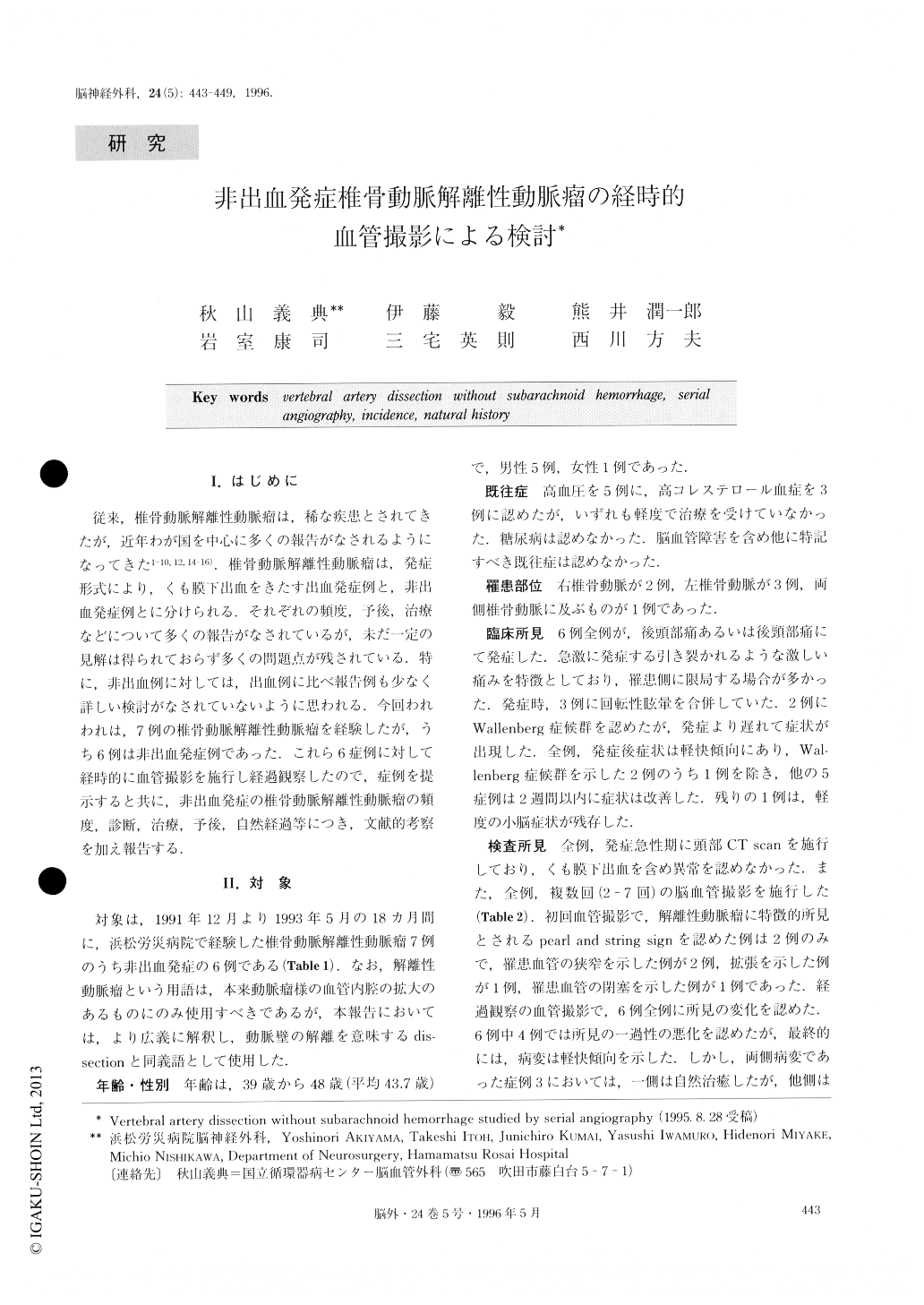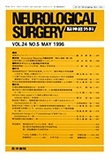Japanese
English
- 有料閲覧
- Abstract 文献概要
- 1ページ目 Look Inside
I.はじめに
従来,椎骨動脈解離性動脈瘤は,稀な疾患とされてきたが,近年わが国を中心に多くの報告がなされるようになってきた1-10,12,14-16).椎骨動脈解離性動脈瘤は,発症形式により,くも膜下出血をきたす出血発症例と,非出血発症例とに分けられる.それぞれの頻度,予後,治療などについて多くの報告がなされているが,未だ一定の見解は得られておらず多くの問題点が残されている.特に,非出血例に対しては,出血例に比べ報告例も少なく詳しい検討がなされていないように思われる.今回われわれは,7例の椎骨動脈解離性動脈瘤を経験したが,うち6例は非出血発症例であった.これら6症例に対して経時的に血管撮影を施行し経過観察したので,症例を提示すると共に,非出血発症の椎骨動脈解離性動脈瘤の頻度,診断,治療,予後,自然経過等につき,文献的考察を加え報告する.
We presented six cases we have encountered of ver tebral artery dissection without subarachnoid hemor-rhage followed by serial angiography. All six patients suffered from severe headache and/or nuchal pain at onset. Pain was acute at onset, with severe intensity and sharp quality and was located unilaterally on the dissection side. Only two patients showed neurological deficits. CT scan disclosed no abnormalities in any of the cases and angiography performed at the acute stage showed varied findings. The so-called pearl and string sign, which has been considered the most common finding of this disorder, was observed in only two cases. The definite diagnosis was able to be finally made by serial angiography. During the first few months after onset, dynamic changes of angiographical findings were demonstrated in all cases. During these periods, although transient deterioration of the angio-graphical findings was shown in four cases, spontaneous healing or improvement was finally recognized in all cases except one which progressed to total occlusion. In contrast to this, in the chronic stage, no changes of angiographical findings occurred in any of the cases. All six patients were treated non-surgically. All showed almost total recovery from symptoms and re-turned to their previous life styles. There were no cases of recurrent deterioration of symptoms in spite of the changes indicated by the angiographical findings. Our experience with these patients suggests that the actual incidence of vertebral artery dissection without subarachnoid hemorrhage may be much higher than is usually thought, and that the natural course of this dis-order seems to be usually favorable. However, longer follow-up study and an analysis of a larger number of cases are required to identify the true incidence and the natural course of this disorder. In addition, we would like to emphasize that accurate diagnosis is most impor-tant. If it is clinically suspected, careful investigations including serial angiography should be carried out for the diagnosis of this disorder.

Copyright © 1996, Igaku-Shoin Ltd. All rights reserved.


